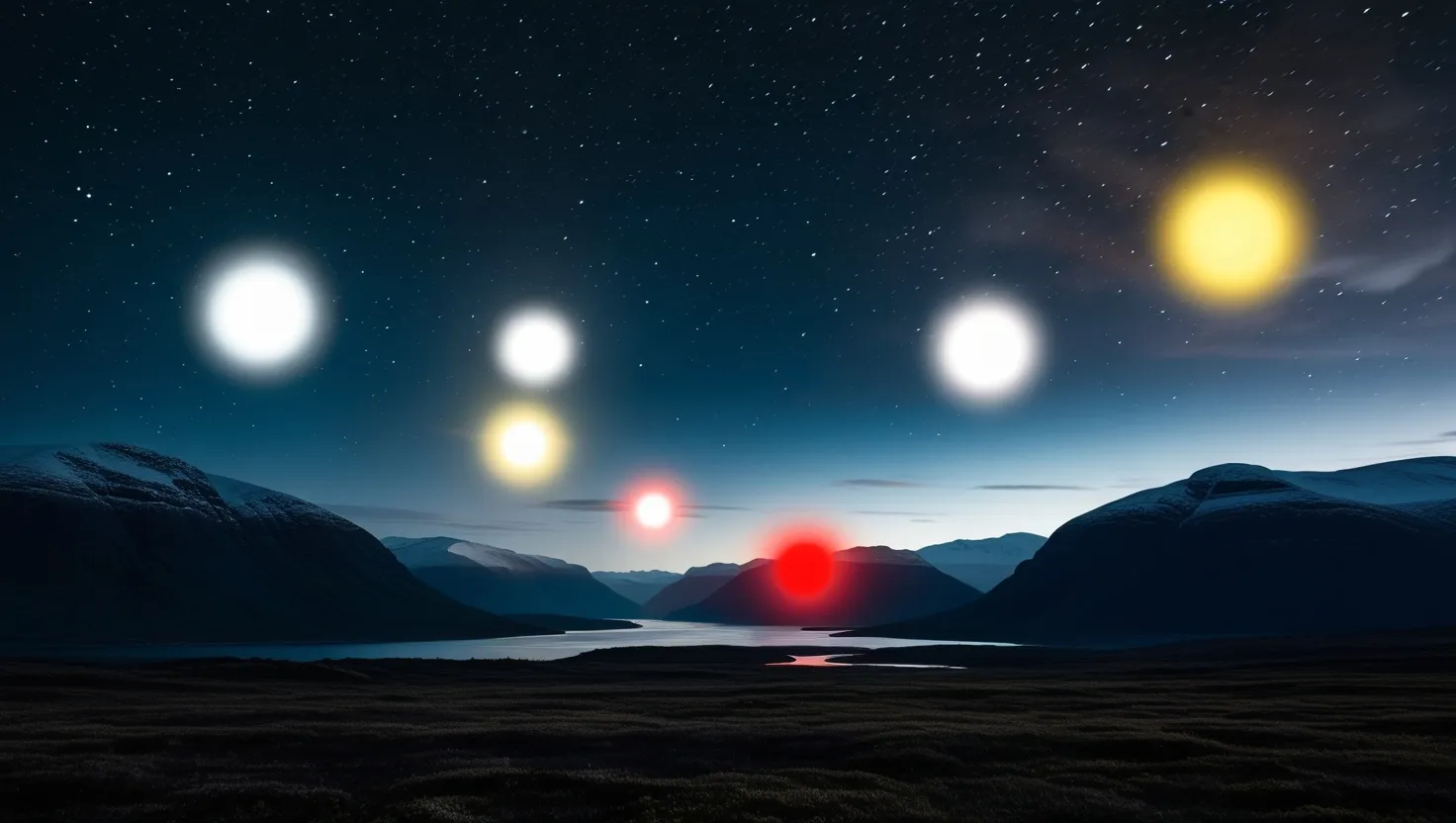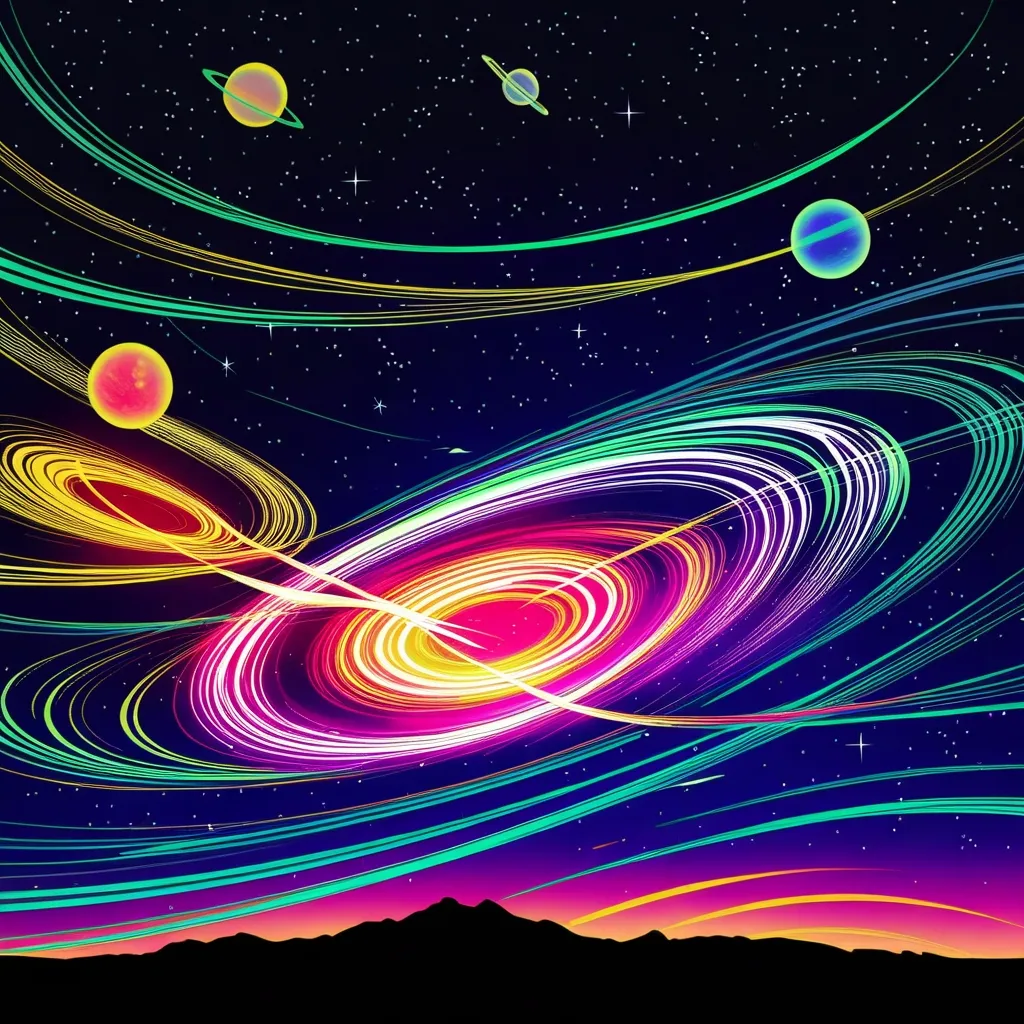The Hessdalen Lights: Precision Pulses from an Unexplained Quantum Source
The remote valley of Hessdalen in rural central Norway holds a fascinating secret. For decades, mysterious lights have danced across its skies, captivating locals and scientists alike. These unexplained luminous phenomena have been documented since at least the 1930s, creating one of the most persistent scientific puzzles of our time.
I first learned about the Hessdalen lights while researching atmospheric anomalies. What struck me immediately was the consistency of witness reports across generations. These aren’t fleeting, one-off sightings but recurring events that have maintained similar characteristics for nearly a century.
The lights typically appear as bright white, yellow, or red glowing orbs that float through and above the valley. They manifest both day and night, sometimes hovering motionless, other times swaying gently, and occasionally accelerating to extraordinary speeds. The duration varies dramatically - from mere seconds to well over an hour.
“The universe is full of magical things patiently waiting for our wits to grow sharper.” - Eden Phillpotts
What makes these phenomena particularly intriguing is their measurement-defying behavior. During the peak activity period between December 1981 and mid-1984, the lights appeared with remarkable frequency - 15 to 20 times weekly. This surge attracted overnight tourists hoping to witness the spectacle firsthand. Though sightings have decreased to around 10-20 yearly observations as of 2010, the scientific interest has only intensified.
Have you ever wondered what it would be like to witness something that challenges our fundamental understanding of physics? Something that makes you question the boundaries between the known and unknown?
The scientific investigation began in earnest in 1983 when “Project Hessdalen” was initiated by UFO-Norge and UFO-Sverige. This pioneering research continued as field investigations until 1985. The work evolved in 1997-1998 when “The Triangle Project” - a collaboration of students, engineers, and journalists - recorded lights arranged in a pyramid shape that bounced up and down.
A significant advancement came in 1998 with the establishment of the Hessdalen Automatic Measurement Station (Hessdalen AMS). This permanent monitoring station was designed to register and record light appearances, providing continuous scientific data collection.
One of the most perplexing aspects of these lights is their extraordinary speed capabilities. The fastest recorded movement reached an astonishing 30,000 kilometers per hour - a velocity that defies explanation for any conventional atmospheric phenomenon. Even more curious, radar has detected invisible objects moving through the area without any visible light signature.
Photography of the lights presents significant challenges due to their rapid movements and the darkness of the valley. Even with exposure times as brief as 1/100th of a second, capturing clear images has proven difficult. This photographic elusiveness adds another layer to the mystery.
“The most beautiful thing we can experience is the mysterious. It is the source of all true art and science.” - Albert Einstein
The lights behave in ways that seem almost intelligent. They appear in the same locations repeatedly. They react to their environment in unpredictable ways. They demonstrate characteristics that don’t align with any known natural phenomenon or human technology.
What if these lights represent a natural process that operates at the intersection of quantum and classical physics? Could they be showing us gaps in our current scientific understanding?
The scientific community has proposed several theories to explain the Hessdalen lights. Some researchers suggest they might result from piezoelectric effects caused by geological stress in combination with rare atmospheric conditions. The valley’s unique mineral composition could generate electrical charges when under pressure, potentially creating luminous phenomena.
Another theory proposes an unknown form of plasma created through quantum fluctuations in the valley’s distinctive electromagnetic environment. The specific geomagnetic properties of Hessdalen might facilitate plasma formations that behave differently from those observed elsewhere.
Some scientists have even suggested the possibility of natural transient Bose-Einstein condensates forming under specific geomagnetic conditions. These exotic states of matter, typically created only in laboratory settings at extremely low temperatures, might somehow occur naturally in this unique environment.
Spectroscopic analysis of the lights has revealed emission patterns that match no known conventional light source, natural or artificial. The specific wavelengths produced don’t correspond to common atmospheric phenomena, adding to the scientific puzzle.
“The important thing is not to stop questioning. Curiosity has its own reason for existing.” - Albert Einstein
The interaction between the lights and measurement equipment presents another scientific conundrum. Some researchers have noted that the phenomena appear to change properties when directly monitored by certain instruments while maintaining consistency when recorded passively. This behavior is reminiscent of quantum observer effects but operating at a macroscopic scale - something that shouldn’t be possible according to our current understanding of physics.
When approaching certain mineral deposits in the valley, the lights sometimes induce temporary molecular restructuring that reverts once they depart. Electron microscopy has confirmed these temporary atomic reconfigurations in exposed rock samples, pointing to energy interactions that we don’t yet comprehend.
Do you ever consider how many natural phenomena might exist just beyond the limits of our current scientific instruments and theories?
The EMBLA program represents the most recent significant research initiative, bringing together established scientists and students to investigate the lights. Leading institutions including Østfold University College in Norway and the Italian National Research Council have contributed expertise and resources to this ongoing study.
What makes the Hessdalen lights particularly valuable from a scientific perspective is their predictability and accessibility. Unlike many reported atmospheric anomalies that occur randomly and briefly, these phenomena appear regularly in a specific location, allowing for systematic study and measurement.
The lights pulse with timing patterns that sometimes follow mathematical sequences, maintaining remarkable precision regardless of external factors like atmospheric conditions, geomagnetic activity, or seasonal variations. This mathematical component adds another layer to their scientific intrigue.
“The most incomprehensible thing about the world is that it is comprehensible.” - Albert Einstein
The terahertz radiation emitted by some of the observed lights maintains coherence over distances that exceed what should be theoretically possible in Earth’s atmosphere. This coherence suggests processes that preserve quantum states in ways we don’t yet understand.
I find it compelling that despite decades of investigation with increasingly sophisticated equipment, the Hessdalen lights remain unexplained. This isn’t for lack of scientific rigor but rather points to phenomena that exist at the edges of our current knowledge.
The persistence of these lights challenges us to expand our scientific frameworks. They represent one of those rare natural phenomena that doesn’t neatly fit into existing categories - not clearly geological, atmospheric, optical, or electromagnetic, but perhaps involving elements of all these.
How might our understanding of fundamental physics change if we could fully explain these mysterious lights?
For those fascinated by the boundaries of scientific knowledge, the Hessdalen valley serves as a natural laboratory where the unexplained can be studied systematically. The continued investigation of these lights may eventually reveal entirely new natural processes that operate at the boundaries between quantum and classical physics.
As technology advances and our theoretical frameworks evolve, the Hessdalen lights remind us that nature still holds secrets waiting to be discovered. They represent not a failure of science but its ongoing process - the continuous questioning, measuring, and theorizing that pushes forward the boundaries of human knowledge.
“The most exciting phrase to hear in science, the one that heralds new discoveries, is not ‘Eureka!’ but ‘That’s funny…‘” - Isaac Asimov
The scientific value of studying such anomalies extends beyond explaining the specific phenomenon. These investigations often lead to advancements in measurement techniques, theoretical models, and cross-disciplinary approaches that benefit multiple fields.
Looking to the future, the Hessdalen lights continue to offer a rare opportunity for studying unexplained natural phenomena under relatively controlled conditions. As monitoring equipment becomes more sophisticated and our theoretical understanding deepens, we may yet discover the mechanisms behind these mysterious luminous displays.
Until then, they remain one of physics’ most persistent and fascinating mysteries - a regular reminder that the natural world still contains phenomena that challenge our most advanced scientific understanding.






